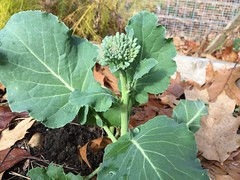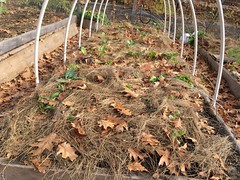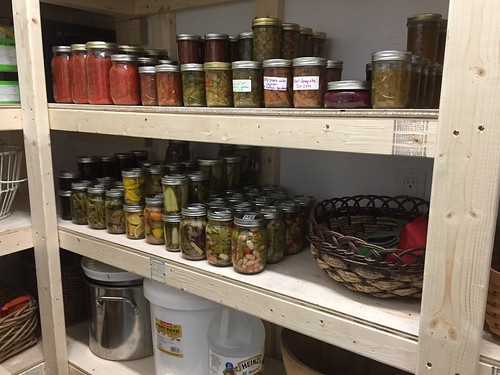
I've been winging it so far in storing my vegetables and honey. But my honey has all crystallized and my potatoes are sprouting.
I have a pantry with a temperature system that I can set 60-75ºF. Or I can leave the system off and the temperature will stay about 50ºF since it's on a cement slab. The room also has a dehumidifier. In addition to this pantry, I have a fridge, and a good sized deep freezer. And there are other areas of the house with different temperatures. So, where to store what?
I have a great book on vegetable storage, "Root Cellaring" by Mike and Nancy Bubel. Roger Swain reviewed the basics of vegetable storage in my recent class. And, I've had advice from my readers on a recent post about my vegetable and honey storage.
So, I've looked up winter storage conditions for all the crops I grow. I've figured out where in my house (or garden) I should be able to store them with conditions at least close to optimal.
1- Leave in the ground until just before it freezes
Parsnips, carrots, turnips, winter radishes, celeriac
2- In garden under winter tunnel
Greens: escarole, spinach, lettuce, mustard greens
3- Frozen
> In deep freezer
Pesto's, dried fruits, roasted peppers, pears in syrup or plain, raspberries
4- Cool and very moist, 32-40ºF, 90-95% humidity
> In plastic bags in the refrigerator
Carrots, beets, parsnips, Chinese cabbage, celeriac, leeks, broccoli (short term), horse radish
5- Cool and moist, 32-40ºF, 80-90% humidity
> In mesh bags or baskets in the refrigerator
Potatoes, cabbage, apples, pears, endive, escarole, sun-dried tomatoes in olive oil, eggs
(I'll need bigger fridge once I (hopefully) get apples and pears and better potato crops)
6- Cool and dry, 32-50ºF, 60-70% humidity)
> In my food pantry (set for 50ºF)
Garlic (better at 50% humidity), onions (hang braided)
7- Moderately warm and dry, 50-60ºF, 60-70% humidity
> In my food pantry (set for 50ºF)
Winter squash, pumpkins, sweet potatoes, canned goods
8- Warm, 70-80ºF
> In the utility room
Honey
If you have experience storing these crops, please let me know your advice. I feel I'm a novice here.



































